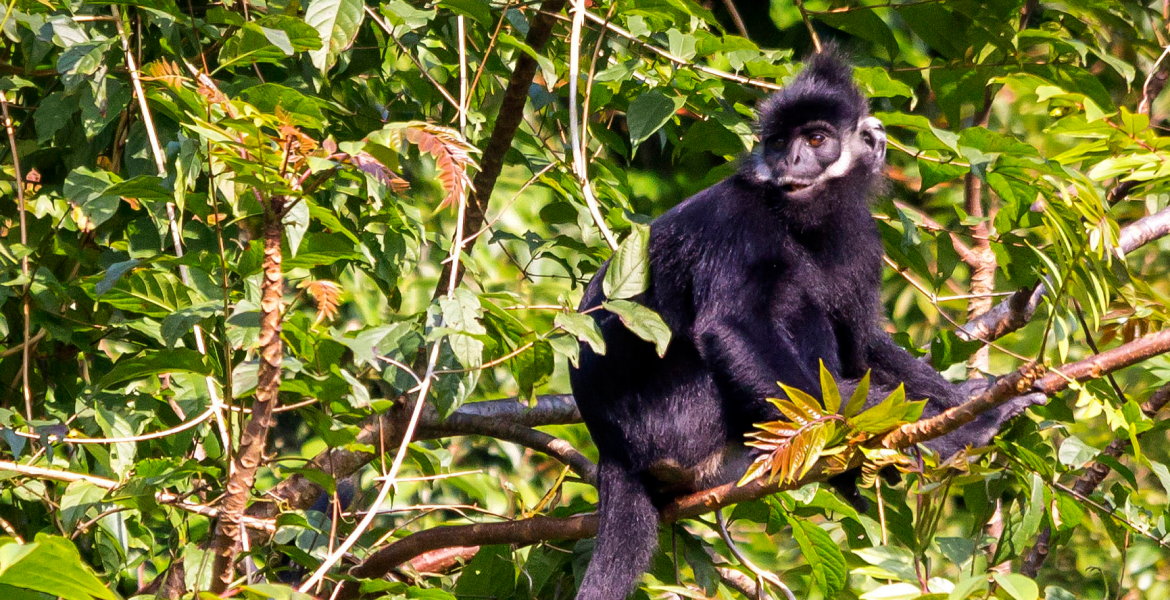Biodiversity Conservation

Facing the Problem

The rate of species extinction is increasing rapidly, 10-100 times higher than 10 million years ago, pushing the Earth to the risk of falling into the largest extinction period since the disappearance of the wingless dinosaurs. on the planet 66 million years ago.
![]() Human squandering of natural resources – which bring prosperity to society, has pushed about 1 million species of animals and plants out of a total of 8 million species on Earth to the brink of extinction.
Human squandering of natural resources – which bring prosperity to society, has pushed about 1 million species of animals and plants out of a total of 8 million species on Earth to the brink of extinction. ![]()
Vietnam has up to 54 ethnic groups, each ethnic group and each community among those ethnic groups are preserving their traditional cultural features and a rich indigenous knowledge system in various aspects.
- Recognition, experience in exploitation, use and management of natural elements
- Knowledge related to the process of making a living
- Knowledge related to material life
- Knowledge in social management
- Knowledge in spiritual life

However, at present, the survival space of the community, especially the ethnic minority communities living near the forest, is being disrupted by many interventions such as: changes in regulations related to resource management , farming and production methods; application of advances in science and technology. In particular, the application of indigenous knowledge in development has not really been given due attention.
Many interventions have been implemented but without a full assessment of the social impact leading to development without inheritance, causing indigenous knowledge of communities to gradually disappear and disappear.
Typically in the world, during the green revolution in India in the period 1960 – 1970, although it gave high productivity, it solved the food shortage during this period, but it left a series of problems. consequences on the environment, biodiversity, indigenous genetic resources, deforestation, desertification, breaking the closedness of the local community.
![]() The forgetting and disappearance of indigenous knowledge threatens the goal of sustainable development and disrupts the community fabric.
The forgetting and disappearance of indigenous knowledge threatens the goal of sustainable development and disrupts the community fabric. ![]()
68%
is the ratio of poor and near-poor households of ethnic groups in the region
Ethnic minorities in Vietnam – equivalent to more than 5 million people – make up the majority in Vietnam*
PRIZE FRANCE ANY
For Problem?
2021 – 2030 has been selected by the United Nations as the decade of Recovery
Ecosystem
- Law on Biodiversity (2008) and Unified Text (2011)
- Law on Forestry, Law on Fisheries, Law on Environmental Protection…
- National strategy on biodiversity to 2020 with a vision to 2030.
Facing the Problem
Community-based biodiversity conservation
Biodiversity conservation is one of the top priorities of CEGORN’s activities. And community-based conservation is one of the ways CEGORN aims. In fact, it has been proved that more than 1 million hectares of natural forest area allocated to the community for management has been well protected.
Relying on indigenous knowledge and customs, the community not only helps to manage areas that are not eligible for the establishment of a national park or protected area. This is also an ‘extension arm’ of co-management and conservation activities in national parks, national park buffer zones or even forest areas that have not been allocated to the community.

Action with the community
- Restore natural forests with native trees, enrich forests with native trees
- Developing medicinal herbs under the forest canopy
- Forest product development under the forest canopy
Raise public awareness
In addition to directly carrying out technical activities, afforestation and biodiversity conservation consulting, CEGORN also regularly conducts awareness raising activities through training programs, awareness raising and public awareness campaigns. ignore the gender equality factor in the implementation process.
Pilot models with lessons learned in practice help CEGORN and its network members and partners to propose appropriate policy improvements towards sustainable development associated with biodiversity conservation. biological form.
Related Posts
Tag

